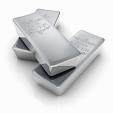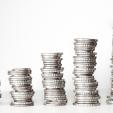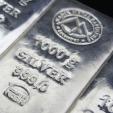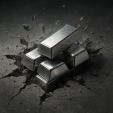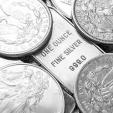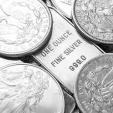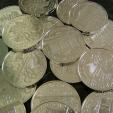Gold Bugs' Trump Card Isn't President Donald Trump: Gadfly
Washington (Feb 5) Gold these days is a bit like the Democratic Party: Tweets from President Trump will help stoke a rally, but it really needs to rebuild its base.
In gold's case, that base is jewelry.
Gold went through almost a round trip last year. It surged as fears of big increases in interest rates faded and the U.S. election campaign intensified, only to then fall after Nov. 8. The slump in the fourth quarter was as steep as the rally in the first.
That drop after the election can be blamed on various things: expectations of an inflationary Trump infrastructure plan, a jump in stocks and the dollar, or just plain old positioning ahead of year-end.
What gave it some added momentum was India. A plan to take high-denomination rupee notes out of circulation there, announced the same day as the U.S. elections, initially sparked a rush to convert cash to gold there. However, as Friday's report from the World Gold Council points out, that quickly gave way to a cash crunch and a sharp decline in demand. This matters because Indian consumer demand for gold -- jewelry, coins and bars -- accounted for 19 percent of the world's total demand for the metal over the past five years. Of this, jewelry is by far the biggest component.
In fact, jewelry demand has been falling pretty much everywhere for the past three years:
The gold price naturally followed, especially as investors also sold off physical gold and exchange traded funds backed by the stuff. What halted the slide in 2016 was a sudden rush back into ETFs:
Having ETFs in the driver's seat makes for a thrilling ride but isn't likely to underpin a sustained recovery in gold prices. The political unknowns multiplying around the new U.S. administration, Brexit and geopolitics will keep some sort of bid in gold from ETFs. Equally, though, President Trump's policies also carry the potential for higher interest rates, a stronger dollar or trade wars, which could undercut gold's prospects.
And gold's quarterly ETF flows are volatile already: Annualized volatility in them over the past three years has been over 400 percent, compared with just 66 percent for investment in physical gold and just 30 percent for jewelry.
Jewelry demand, despite hitting its lowest level since 2011, still accounted for 47 percent of the global gold market last year. Restoring its momentum will require good economic growth in key markets like China, India and the Middle East as well as tempting prices. Gold's average price in 2016 was a fifth lower than the average for 2011 -- in U.S. dollar terms. In Indian rupees, it was 14 percent higher.
Gold's reputation as a haven should offer good opportunities in what is likely to be a fractious year -- provided you have exquisite timing. For a sustained rally, though, the metal needs to get back to basics.
SOURCE:Bloomberg

